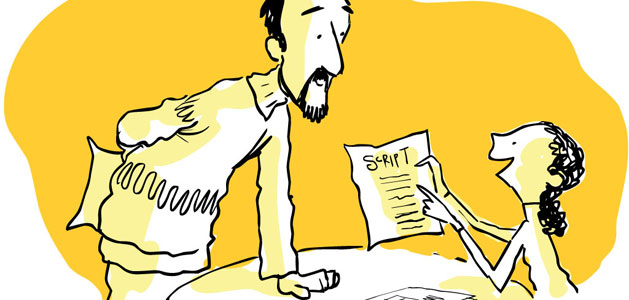
Raise expectations and standards in our classrooms by granting more responsibility to the learner.

“I think it’s an exaggeration, but that there’s a lot of truth in saying that when you go to school, the trauma is that you must stop learning and you must now accept being taught.”
—Seymour Papert
I am fortunate to be invited to work in schools all over the world. Regardless of the setting, I find myself leaving educators I meet with the same four words of advice, “Less Us, More Them!”
Knowledge is a consequence of experience. Understanding is the result of existing knowledge accommodating and explaining new experiences. If we focus on a handful of powerful ideas, students learn more. The role of the teacher is to create and facilitate powerful, productive contexts for learning.
Education policy often confuses teaching and learning. Learning is not the direct result of having been taught. If you have spent any time working with learners, you know that you can’t simply talk at them, or do something to them, and expect that they have learned anything. A robot can deliver curriculum; great teachers provide much more.
Young people have a remarkable capacity for intensity, but need their teachers to craft learning environments that reduce stress levels, interruptions, and confusion. When a teacher creates a well–designed prompt that capitalizes on student curiosity, kids can embark on complex, long-term learning adventures.
Inquiry begins with what students want to know… the things they wonder about and that drive their desire to learn. When we build off this natural phenomenon, we support learners along the path to knowledge and understanding without expecting a right answer. Successful learning expeditions use the curriculum as the buoy, not the boat.
“Less Us, More Them” (LUMT) doesn’t exempt teachers from the learning process, or minimize the importance of their expertise within in the learning environment. LUMT raises expectations and standards in our classrooms by granting more responsibility to the learner. In this environment, it is natural to expect kids to look up unfamiliar words, proofread, and contribute resources for class discussion without prodding from the teacher.
To start making your classroom more student-centered, demonstrate a concept and then ask students to do something. Walk around and support them. Bring the group together to celebrate an accomplishment or seize the next teachable moment. We need to operate as if students own the time in our classrooms, not us. Kids rise to the occasion if we let them. When students own the learning process, they also own the knowledge they construct. Self-reliance results when we relinquish control and power to our students.
If you wanted to become a carpenter, you would spend time with great carpenters. Teachers serve as effective mentors when their apprentices – students – observe their continuous growth and learn by example.
Piaget suggests that it is not the role of the teacher to correct a child from the outside, but to create conditions in which the student corrects himself. Whenever you are about to intervene on behalf of a teachable moment, pause and ask yourself, “Is there a way I can shift more agency to the learner?”

Follow us on Instagram for daily inspiration

Create a thought web, cluster, flowchart, or other graphic organizer for a lesson
8 first projects to get students using technology
Creative, digital book reviews
Fun and powerful ideas with animated characters

Wixie
Share your ideas, imagination, and understanding through writing, art, voice, and video.

Rubric Maker
Create custom rubrics for your classroom.

Pics4Learning
A curated, copyright-friendly image library that is safe and free for education.

Wriddle
Write, record, and illustrate a sentence.

Get creative classroom ideas delivered straight to your inbox once a month.
Topics